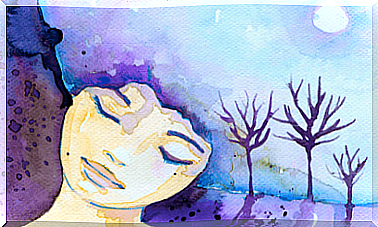Laugh More: Even A Forced Smile Makes You Happy

Laughing more is a to-do list for many. But sometimes it’s harder to just smile like that than we think. Sometimes we really have to force ourselves to do it. Here we are based on a hypothesis: being happy makes us laugh, and a smile also makes us happier.
The theory on which this premise is based is that the way we communicate with our body affects us emotionally. If we tend to be pessimistic and melancholy, it is very likely that we will adopt a corresponding state of mind as well. That is why we can say that our non-verbal communication triggers “side effects” in us.
Laughing more helps us feel better.
What functions a smile has
The smile is a universal gesture, which means that all of humanity is smiling. Interestingly, it’s not just about showing that we’re happy or satisfied. Specifically, there are three types of smiles:
- A smile based on joy and happiness: this is probably the most famous smile. We use it to communicate our joy, to show the world that we are happy and that we are comfortable and fulfilled.
- A social smile: This type of smile does not represent happiness, it is used to make the people around us feel safe. With this smile we communicate that we are trustworthy, that others have nothing to fear. It’s a smile that we share with people we don’t know on the street or in line at the checkout in the supermarket, among other places.
- A smile of superiority: with it we exude arrogance and make ourselves important in front of others. It is an expression of pride and shows what we accept at this moment: We are superior to the people around us.

More laughter = more happiness
While it may be hard to believe, having a relaxed and happy attitude also makes us more relaxed and happy. Therefore, it helps us to literally attract happiness by laughing more. There is a study carried out by Fritz Strack in the 1980s that proves this:
In this study, two groups of people were presented with funny comics, and one group had to read them with a pencil in their mouth. The pencil in the mouth stimulated contractions of the large zygomatic muscle, which is responsible for the cheek lift that is characteristic of laughing. The group with the pencil in their mouth reacted more sensitively to the humorous content than the group without a pencil, from which it was concluded that the physiological replication of the gesture of smiling favored a positive mood.
In this way a theory was developed that had a great influence on psychology and that the gesture alone can evoke a feeling. That is the feeling that has long been known to lead to the same gesture.
Controversy surrounding Strack’s investigation
Following this initial study, further studies were scheduled to attempt to confirm the result. Unfortunately, none of them have given such clear results that the original results are now being called into question. There is no other experiment that would fundamentally support the results of Strack’s study.
If we repeat the experiment at home, in front of a mirror, it is likely that another well-known phenomenon occurs, which in turn has been proven many times: the placebo effect. Thanks to this strange effect, we are able to achieve results with processes, drugs or treatments that do not contain active ingredients or that do not have any real effectiveness.
What We Can Actually Do To Make You Laugh More (And Be Happier)
Given this situation, we must ask ourselves whether there are any effective exercises for smiling more and being happier. Prof. Laurie Santos of Yale University (Connecticut, USA), it demonstrates our most popular course in the history of Yale University: In their course How to Be Happy (on German about: How to be happy ) describes them five activities, which we daily pursue if we want to improve our subjective state of happiness:
1. Gratitude list
Several times a week, if not every evening, we should write in a notebook or notebook what we are grateful for. We can do this by answering the following questions: What do we have that makes us happy? Who do we thank for their presence in our lives?
2. A better sleep
It’s not about getting a lot of sleep, it’s about finding a good night’s sleep. Sleeping eight hours a day becomes practically utopian with age. It seems like the older we get, the less and less we sleep. In addition, we also have more problems in adulthood, which makes it difficult to fall asleep.
However, we all know the benefits of a good night’s sleep. For example, healthy sleep helps our endocrine system to function properly, which in turn influences important processes such as metabolism, digestion and concentration.

3. Meditation
If we meditate for just ten minutes a day, our mood improves. The effectiveness of this practice has been proven several times. In addition, it has a special quality: whoever meditates, thereby favors full concentration, his mindfulness.
4. Spending time with loved ones
Spending time with people we love helps us relax, forget about commitments, and ultimately be happier. Because social ties and interpersonal relationships are related to moments of happiness: Holidays, adventures, parties, celebrations, excursions, games, etc. make us happy.
5. Time saving in social networks
Spending more time with loved ones means spending less time on other forms of communication, such as socializing. B. to receive and send messages on the mobile phone.
It’s true, of course, that social networks have brought us many benefits, but “real relationships” have suffered as a result. We should not forget that real relationships are much more important when it comes to the subjective perception of our quality of life. Because a smile based on happiness is there to be shared with others, and not just through an emoticon.
Finally, don’t forget to smile more!









